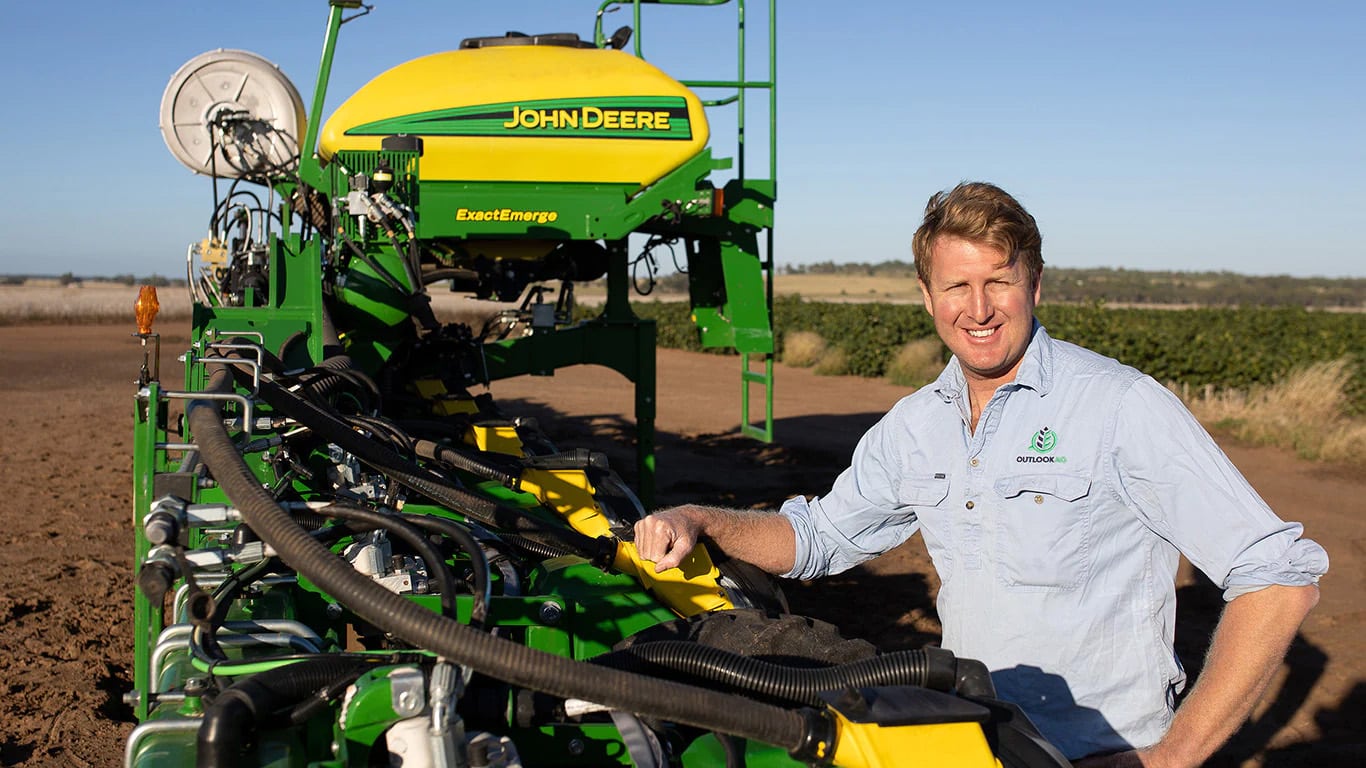Published by John Deere Australia – Crestmead, Queensland (27 April, 2022)
During the peak of a busy wheat harvest, as summer storms were threatening to unleash, John Deere ExactEmerge helped to ensure the University of Sydney’s 160 ha commercial dryland cotton crop near Narrabri was planted within approximately 24 hours.
The rapid planting pace, which peaked at 16km per hour, was set as part of a research project being conducted by John Deere in collaboration with the University to give third party validation of ExactEmerge’s ability to maintain accuracy of singulation, seed population, spacing and applied downforce at increased speeds. It was also an unprecedented speed for planting on ‘Llara’, the University’s 1850 ha mixed enterprise commercial operation, and has now paved the way for the technology to be used extensively across the property.
University of Sydney, Narrabri Farm Manager, Peter Bell, said ExactEmerge effectively doubled planting productivity and watching Llara’s heavy black soils accurately sown during what was an exceptionally small window alleviated pressure during the peak planting season.
“When we sowed cotton last year we were flat out at harvest, had headers working in the paddock and trucks moving everywhere, so when the planter arrived, and was able to come in and get the job done efficiently, we were able to focus solely on our winter crop regime,” Mr Bell said.
“We had been in and out of storms leading up to planting and managed to get the seed in just before it rained, so we certainly would have been behind the eight ball if we hadn’t finished sowing.
“However, what stood out to me the most was the actual plant placement, and the accuracy which was maintained regardless of the planter’s speed.”
Mitch Cuell, Outlook Ag, Agronomist, has worked as a commercial consultant to the University of Sydney for the past five years and watched ExactEmerge’s monitoring capacity from the cab of the John Deere 8R 370pulling the planter.
“The seed placement is second to none and we rarely saw a gap as every plant was exactly where it needed to be,” Mr Cuell said.
“This is important because agronomically, if you have openings in your plant stands across patches of your paddock, your cotton plant can grow incorrectly.
“This can then lead to the plant compensating for that gap, which makes the crop much more difficult to manage.”
ExactEmerge also improved seed usage, as this season the farm planted nine seeds to achieve six to seven plant stands per metre, compared to the 10 seeds required to achieve six in the past.
Looking across the now established cotton crop, Mr Cuell described the plant stands as even and said ExactEmerge’s technology proved particularly effective in the dryland crop.
“Moisture is the biggest thing in dryland cotton, and with ExactEmerge we could see the planter was making sure every single seed was hitting the moisture, consistently,” he said.
“We work so hard in our rotations and fallow program to keep as much cover on the ground to store as much water as possible in the profile, so, to be able to use that moisture efficiently and evenly throughout the paddock is critical.”
John Deere Australia and New Zealand, Precision Agriculture Manager, Benji Blevin, said ExactEmerge was built to achieve accurate seed placement within optimum planting windows, as well as uniform emergence, to ultimately improve yields and profit.
“Growers typically plant at eight kilometres per hour, but ExactEmerge can maintain planting accuracy at up to double the speed,” Mr Blevin said.
“The BrushBelt system delivers seed into the trench on a dead drop so there is no bounce or roll, even at the higher speeds. This gives producers the confidence to go faster as they know every seed will have the desired spacing.
“That ability to accurately cover twice as many hectares with a high-speed planter means growers can make the most of the optimal planting window, which helps increase the chance of maximising yield potential.”

 MyDealer:
MyDealer:


